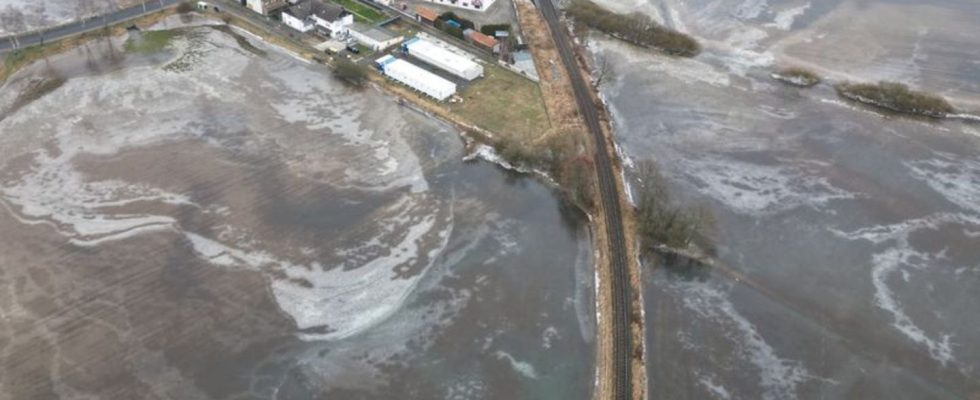Flood
Water in flood areas drains slowly
Flooded and then frozen: A railway line near Nidderau-Eichen in Hesse. photo
© Arne Dedert/dpa
Emergency services have been on flood operations in parts of Germany for around three weeks. The situation is improving, but only slowly.
In the south of Saxony-Anhalt, the Mansfeld-Südharz district wanted to lift the disaster declared around two weeks ago on Friday evening. According to the district office, the situation at the Kelbra dam and along the Helme is easing. There is no longer any acute danger to the population. When the disaster is lifted, the Bundeswehr will be relieved of its duties, said a spokeswoman for the Bundeswehr. This means that the deployment of around 200 soldiers will end two days earlier than originally planned.
2.5 million sandbags filled
According to the district, the soldiers alone installed a total of half a million sandbags. According to initial estimates, a total of 2.5 million sandbags have been filled and mostly installed in the past 14 days, it said.
On the Thuringian side, the emergency services are also breathing a cautious sigh of relief. The water levels in the threatened areas around the Helme are constantly falling, as the district office in the Kyffhäuser district announced. There is no all-clear, but there is a “noticeable relaxation”. Parts of Germany have been struggling with flooding for around three weeks.
As a consequence, the Federation for the Environment and Nature Conservation (BUND) called for natural floodplains to be reclaimed. A rethink is necessary in order to be prepared for extreme situations expected in the future, said Lower Saxony BUND state chairwoman Susanne Gerstner. “We have to give our rivers more space again.” Particularly in the climate and species crisis, natural river courses and their floodplains are of central importance: “They naturally buffer the consequences of floods and droughts.”

